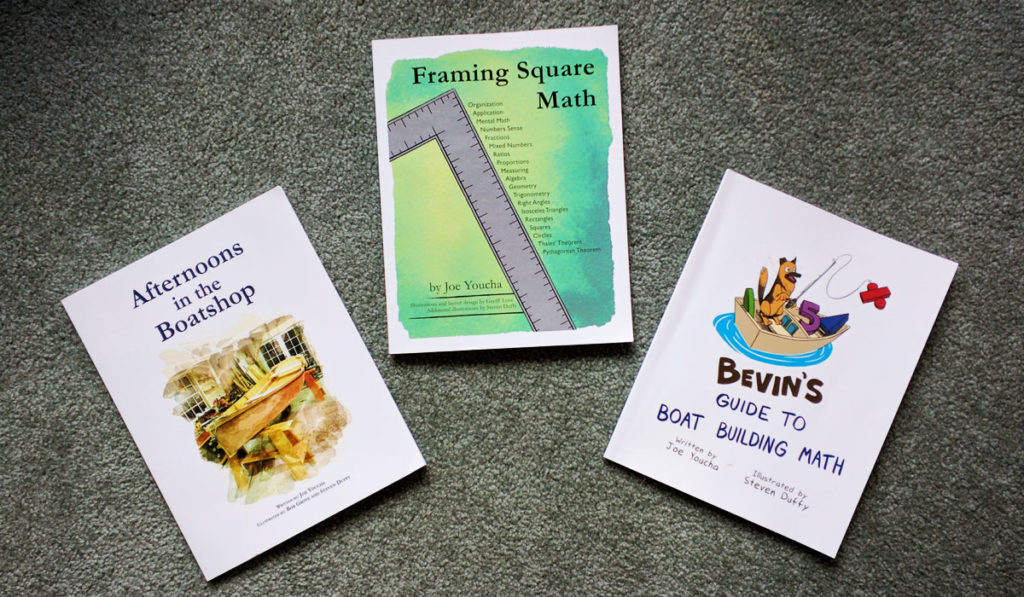We may receive a commission when you use our affiliate links. However, this does not impact our recommendations.
 Many kids (not to mention woodworkers) will say “I hate math!”. But as Kalid Azad of www.betterexplained.com has pointed out what they are really saying is that they hate how math makes them feel. Nobody likes to feel frustrated and stupid.
Many kids (not to mention woodworkers) will say “I hate math!”. But as Kalid Azad of www.betterexplained.com has pointed out what they are really saying is that they hate how math makes them feel. Nobody likes to feel frustrated and stupid.
Presenting math concepts through manipulating a physical “calculator,” however, goes a long way to not only changing that perception but to instilling an intuitive understanding of the core principles underlying arithmetic, algebra and trigonometry. Enter Joe Youcha of www.buildingtoteach.org with his new book “Framing Square Math”. As the title suggests, the physical calculator placed in the student’s hands in this case is the once ubiquitous carpenter’s framing square.
Joe’s book starts by instilling the idea that numbers not only happen abstractly along a one-dimensional line, but also reflect a real physical value, a distance that is more than just a numerical dimension in a formula. The square, held against a series of physical objects, shows the real world consequences of their addition (and subtraction). Going another step further, you’ll see how the square can automatically generate a coordinate plane along which it can create slope lines of ratios (i.e. proportional relationships.) This means you can go on to solve for one unknown dimension by “slipping” the square along the slope line without having to work a formula. Talk about a soft introduction to algebra!
As you progress through the remainder of the book, you’ll see the square utilized to work with fractions and mixed numbers; calculate functions of circles; and to produce rise and run slope lines that demonstrate the magic of like right angles–instill the implicit concepts of trigonometry.
The bottom line is that this book accomplishes what a schoolbus-load of textbooks often fail to do: Produce the visceral experience of math coming to our senses through the good work of our hands. For us kids/woodworkers, I propose there is no better way to find success with numbers.
Copies of this book, along with Joe Youcha’s other two recent books on teaching the fundamentals of math through the building of a small skiff (or a model of it), can be purchased through his organization’s website: www.buildingtoteach.org
Review by Jim Tolpin
 Jim Tolpin is the author of numerous books on woodworking, including most recently a series of co-authored books on using the ancient techniques of “artisan geometry” to intuitively–and quickly–create designs and produce layouts. Find these titles at Lost Art Press. He also authored The New Traditional Woodworker, available at ShopWoodworking.com. Blog posts on these subjects can be read at www.byhandandeye.com.
Jim Tolpin is the author of numerous books on woodworking, including most recently a series of co-authored books on using the ancient techniques of “artisan geometry” to intuitively–and quickly–create designs and produce layouts. Find these titles at Lost Art Press. He also authored The New Traditional Woodworker, available at ShopWoodworking.com. Blog posts on these subjects can be read at www.byhandandeye.com.
Here are some supplies and tools we find essential in our everyday work around the shop. We may receive a commission from sales referred by our links; however, we have carefully selected these products for their usefulness and quality.








